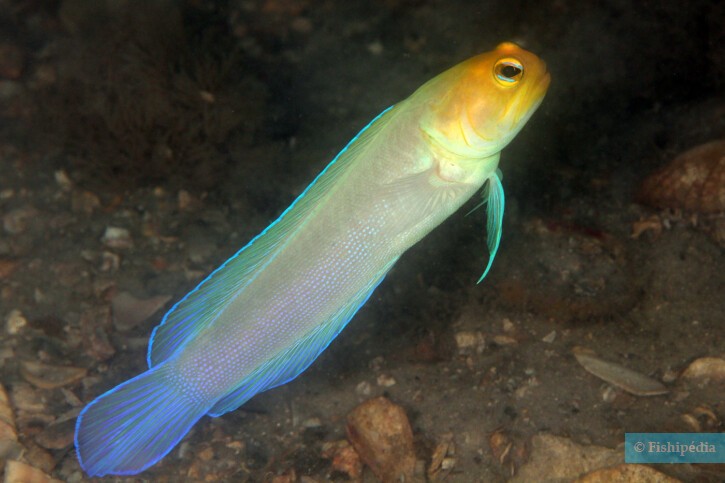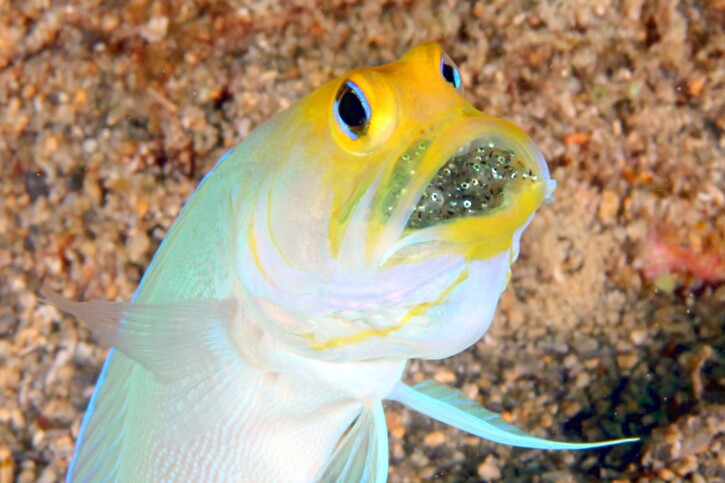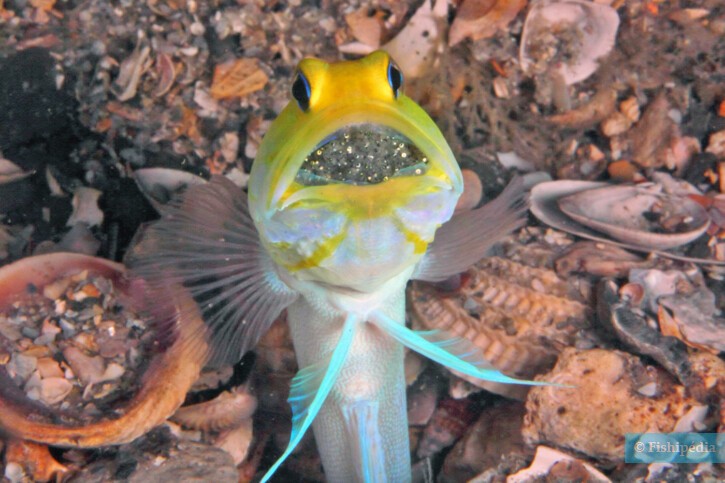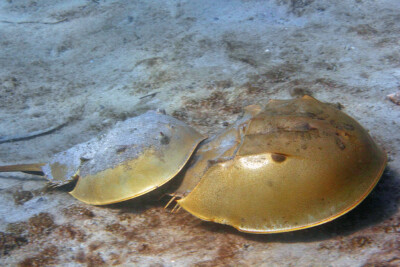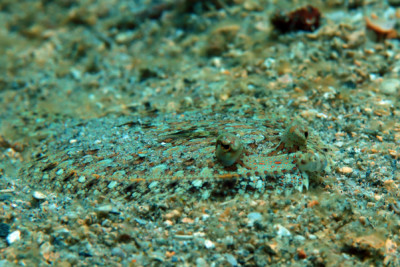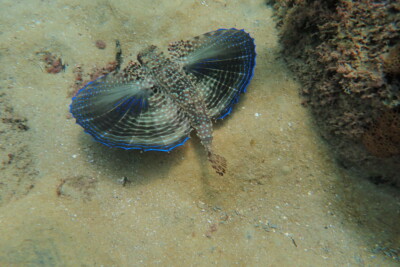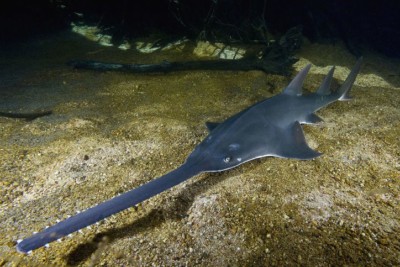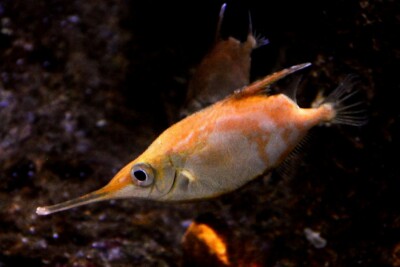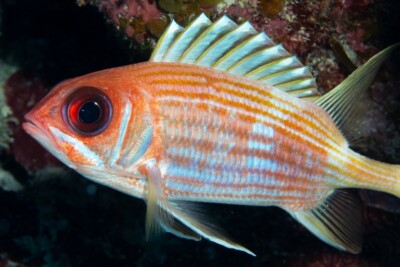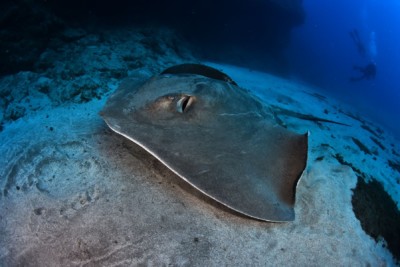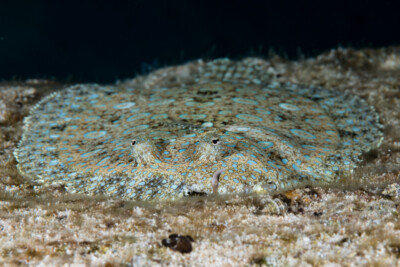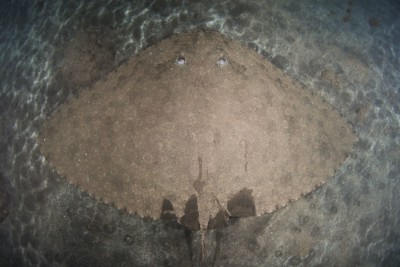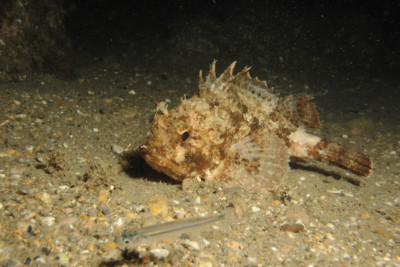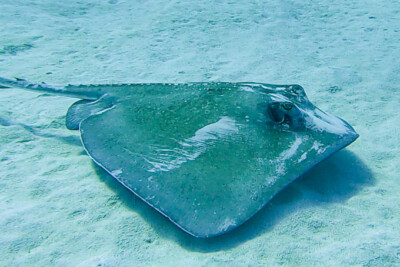yellowhead jawfish
| Family | Opistognathidae |
|---|---|
| Genus | Opistognathus |
| IUCN category (World) | LC |
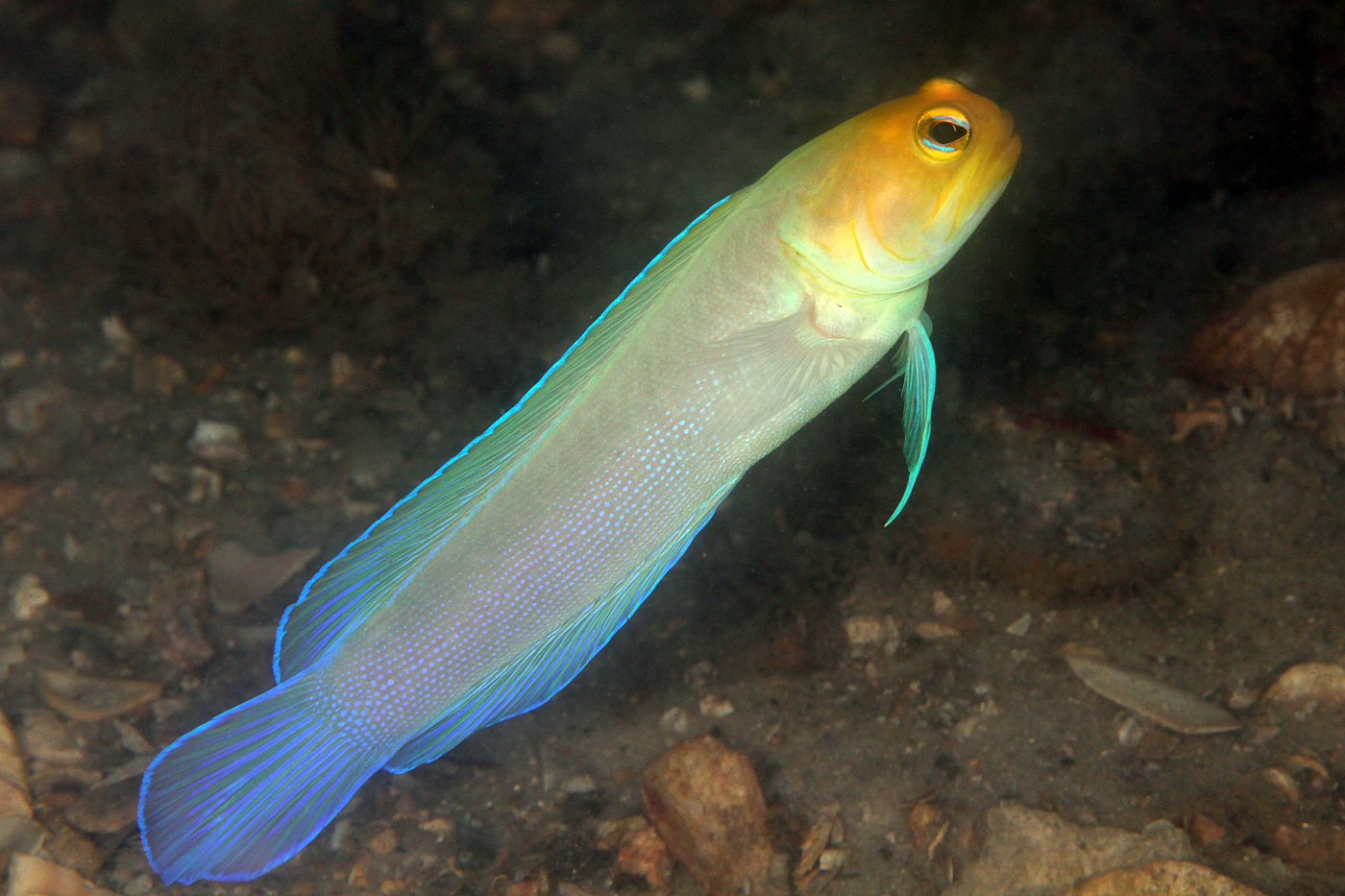

Introduction
Yellowhead Jawfish is a tropical marine fish found from Venezuela to Florida. This species is present throughout the Caribbean region. Although the population is stable, the invasion of Pterois volitans in some areas puts strong pressure on local populations.
Who is it?
Morphology
-
Average size8 cm
-
Maximum size10 cm
-
Longevity8 year
-
Average size8 cm
-
Maximum size10 cm
-
Longevity8 year
How to recognize This fish ?
The Yellowhead Jawfish is bicolored with a mostly blue/beige body and a yellow head.
The body is elongated, slightly laterally flattened. The head is scaleless, with a large mouth. The dorsal and anal fins are long. Apart from the translucent pectoral fins, the fins are slightly transparent blue.
The eyes are large and located at the front of the head.
Sexual dimorphism
There is no apparent sexual dimorphism in this species, apart from a black spot appearing on the male's head just before the breeding season.
Behaviour & Life cycle
-
dietcarnivorous and planctophage
-
Sociabilityliving as a couple or alone
-
territorialNo
-
Way of livingdiurnal
The Yellowhead Jawfish is a fish living in pairs or solitary. This species, with a shy temperament, spends most of its time at the entrance of its burrow dug in the sand. It fiercely defends its territory in case of intrusion.
This diurnal species retreats into its burrow at night, closing the entrance with debris, rocks, or shells for protection.
Reproduction
-
Reproductionovipare incubateur buccal
The Yellowhead Jawfish is an oviparous mouthbrooder.
During the courtship, the male remains still above its burrow in an oblique position, with all fins spread. The seduced female will lay a compact, sticky egg mass in the male's burrow. After fertilization, the eggs are gathered in the mouth and incubated by the male for nearly a week.
To feed, the male releases its eggs at the bottom of the burrow and then retrieves them after feeding.
After hatching, the larvae fend for themselves. From two weeks after hatching, the juveniles are independent and capable of building their own habitat.
Harmless species
This species does not pose a particular danger to humans when encountered in its natural habitat.
Origin and distribution
What is its habitat?
Natural environment characteristics
-
Temperature22 - 26 °C
-
Depth3 - 40 m
Biotope presentation
The Yellowhead Jawfish is most commonly found at depths of less than 40 meters in coral areas on sandy bottoms.
Species of the same biotope
Main recommendations for fishkeeping
Deontology
In order to preserve wildlife, if you acquire this animal, it must not be released into the wild. See also, the Fishipedia charter.
Fishipedia supports the practice of responsible and environmentally friendly aquarium keeping. We encourage maintenance if it is motivated by a desire to understand the biological functioning of living things and if it is done with respect for animal life.
We believe that aquaristics is an opening to the discovery of aquatic environments, especially freshwater, and that this knowledge is necessary to better protect and respect these environments. Logically, we refute the compulsive purchase of animals that would not find a sufficient and / or adapted place in the host aquarium.
Our recommendations
-
Min volume80 liters
-
Population minnot specified
-
Temperature22 - 26 °C
-
pH (acidity)8.2 - 8.4
Characteristics
-
Difficulty breedingmoderate
-
Behaviourslightly aggressive
General reminders
It is strongly advised to read the complete dedicated file and to get information on the feedbacks of maintenance of the envisaged animal, this to avoid any potential conflict whose end result is generally the death of the individual (or the other inhabitants). It is important not to overload your aquarium to limit pollution. This will make maintenance easier.
General reminder on maintenance datas
Le démarrage d'un aquarium est une partie primordiale pour l'équilibre et le bien-être des poissons. Lorsque l'on met en eau un aquarium, l'eau passe naturellement par un cycle biologique : le cycle de l'azote. Celui-ci dure environ trois semaines. Tous les 2 jours, nous vous conseillons de tester votre eau jusqu'à ce que le taux de nitrite soit à zéro pendant plusieurs jours d'affilée.
Pour accélérer ce cycle, vous pouvez utiliser un activateur de bactéries comme JBL Denitrol. Cette solution riche en bactéries vivantes et enzymes permet une mise en place rapide du cycle de l'azote. Les poissons peuvent alors être introduits plus rapidement.
Il est important de tester l'eau de son aquarium régulièrement pour maintenir un environnement sain pour les poissons et les autres habitants. Les tests d'eau permettent de mesurer les niveaux de différents paramètres tels que le pH, la dureté totale, ainsi que les taux de nitrates, de nitrites et d'ammoniaque.
Pour réaliser ces tests, vous pouvez utiliser des produits d'analyse spécialisés tels que JBL ProScan qui permet de réaliser un diagnostic de l'eau directement via un smartphone. Il existe également des coffrets de tests plus classiques de bandelettes, comme JBL PROAQUATEST.
En cas d’usage de l’eau du robinet, vous pouvez utiliser un conditionneur d’eau de type Biotopol de JBL pour éliminer les substances nocives comme le chlore, le cuivre, le plomb et le zinc. Une eau trop dure ou trop calcaire peut être inadaptée à de nombreuses espèces tropicales d’eau douce. Si nécessaire, vous pouvez la couper avec de l’eau osmosée ou de pluie filtrée afin d’obtenir une dureté plus adaptée aux besoins de vos poissons et de vos plantes. Les conditionneurs d'eau garantissent une meilleure santé aux poissons et une meilleure croissance des plantes.
Chlorine and chloramine are dangerous for the health of animals. Used to disinfect water, these agents are present in significant quantities in tap water. We recommend using an anti-chlorine agent every time you change the water. In addition to chlorine, treatments and medicines sold for aquarium use sometimes contain dangerous heavy metals in high doses.
Specific needs for the yellowhead jawfish
The yellowhead jawfish is a marine species which lives naturally at a temperature between 22 °C and 26 °C. Nitrate levels should remain below 50mg/L. To keep the water clean and unpolluted, plan on changing 20% to 30% of the water volume each month. In seawater, it is also possible to remove nitrates using one of the following methods: Jaubert, denitrator on sulfur, biopeletts, vodka method.
The breeding of this species is accessible on condition of being well informed about its needs in aquarium . Any cohabitants must be chosen with care to avoid the loss of animals.
Builder fish
This fish has the particularity to dig its territory in the sand. Therefore, it is likely to uproot plants and modify the decor of the aquarium.
Cohabitation & Environment
In a community aquarium context, this species should be kept in a minimum volume of 80 liters.
Tips for feeding
The yellowhead jawfish is carnivorous and planctophage.
Feed animals in moderation to maintain good water quality. Meals should be eaten within 2–3 minutes, served in several small portions rather than a single large ration.
Uneaten food quickly decomposes, releasing ammonia, nitrites, and nitrates, which disturb the aquarium’s biological balance.
Make sure each species can access food properly, slower or bottom-dwelling individuals may require targeted feeding.Reproduction protocol
-
Spawning cleaningMale
-
egg-laying protectionMale
-
Fry protectionNo
Hybridization risks
In general, it is advised not to mix several species of the same genus or different varieties of the same species, to avoid the risks of hybridization.
These animals might interest you
To go further
Sources & Contributions
Participation & Validation
The Fishipedia team and specialist contributors are committed to providing high-quality content. However, although the information comes from scientific sources or testimonials from specialists, the cards may contain inaccuracies.

Adrien Falzon
Translation
Translation done with the valuable contribution of our translators, who make this information available to a wider audience. We sincerely thank them for their commitment.
Bibliographic references
- - GBIF
- - Burrowing Behavior of the Yellowhead Jawfish, Opistognathus aurifrons - Patrick L. Colin - JSTOR - 1973.
- - Interspecific Relationships of the Yellowhead Jawfish, Opistognathus aurifrons (Pisces, Opistognathidae) - Patrick L. Colin - JSTOR - 1971.
- - GEOGRAPHIC VARIATION IN THE YELLOWHEAD JAWFISH, OPISTOGNATHUS AURIFRONS (PERCIFORMES: OPISTOGNATHIDAE). - WALDNER, RAYMOND ERNEST - Florida Atlantic University - 1975.
Scientific partners
Tags
Species of the same biotope
